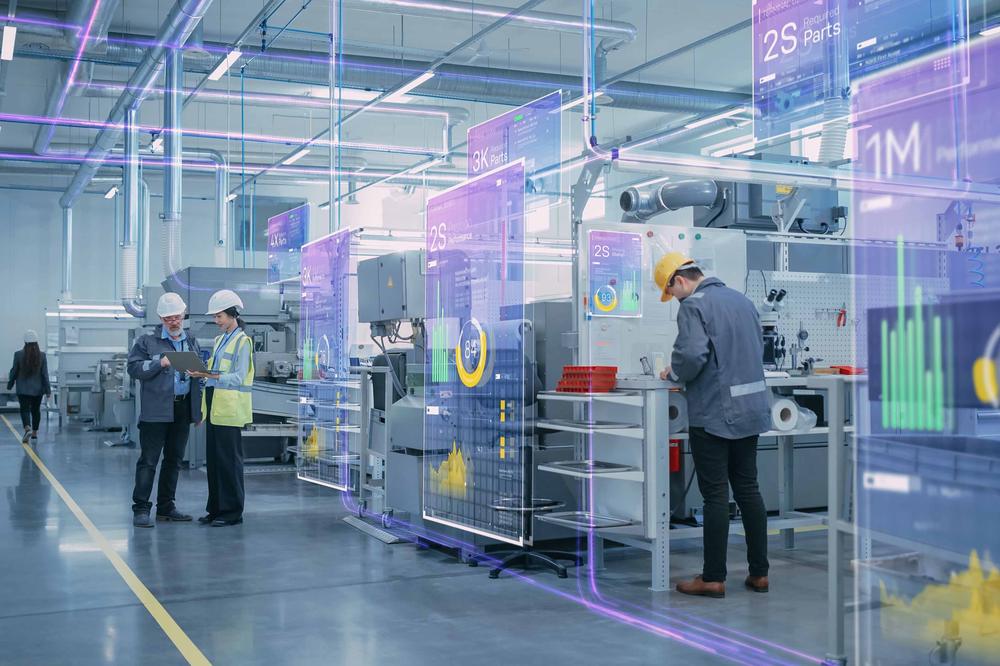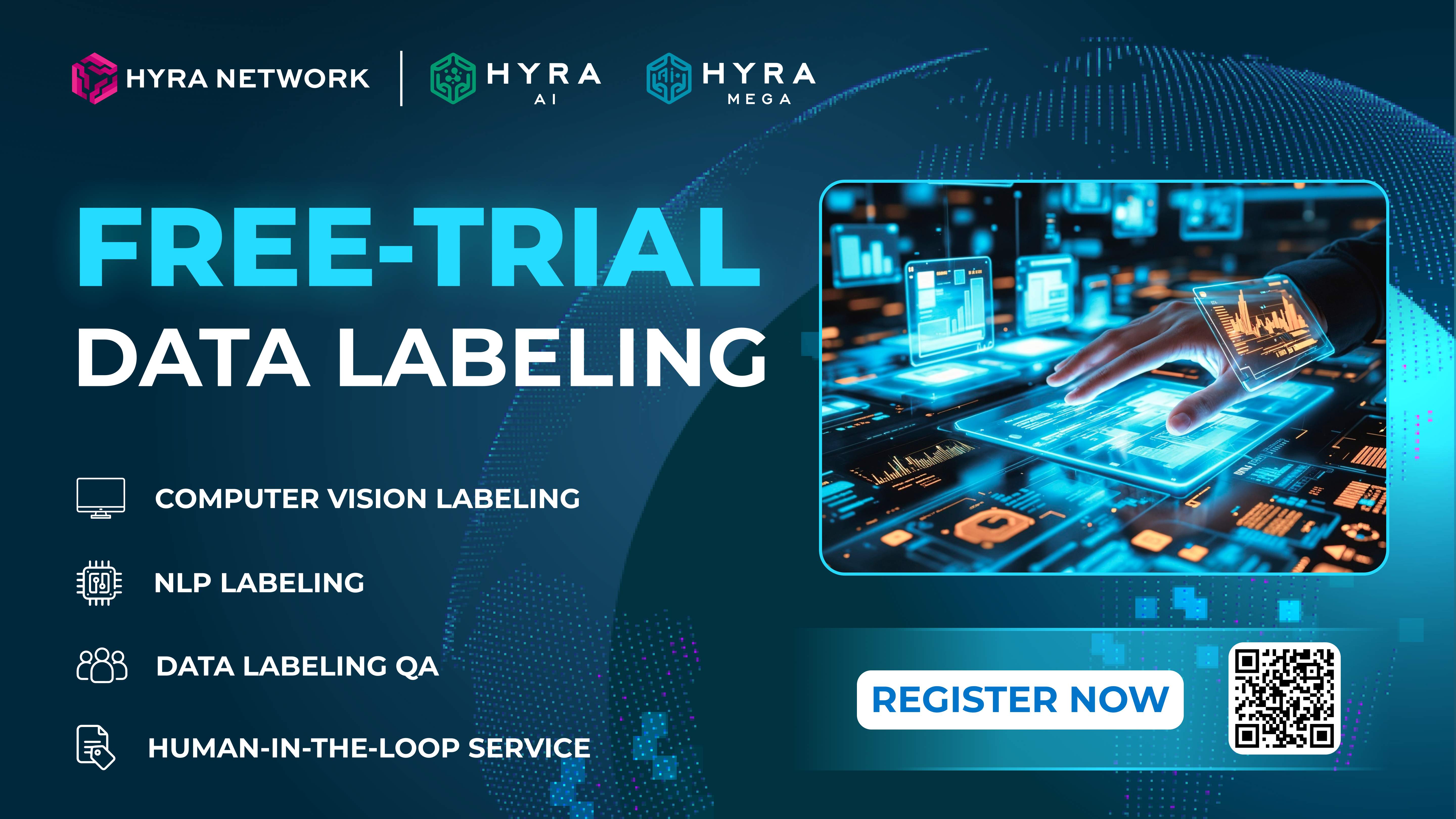
The B2B platform for the best purchasing descision. Identify and compare relevant B2B manufacturers, suppliers and retailers
Close
Filter
Result configuration
Continents
Select continent
Locations
Result types
Company type
Select company type
Industries
Select industry
Company status
Select company status preset
Number of employees
Min.
Max.
Founding year
mLogica LLC
Las Vegas, United States
B
251-500 Employees
2004
Key takeaway
mLogica specializes in hyperscale big data ingestion and near-real-time analytics, providing actionable insights across various industries. Their expertise in modernizing databases and applications for large-scale engagements positions them as a key player in the big data landscape.
Reference
Service
Business Analytics for Hyperscale Big Data - mLogica
Big Data Analytics
Lahore, Pakistan
E
11-50 Employees
2018
Key takeaway
The company specializes in data analytics and software engineering services, emphasizing its expertise in Big Data Analytics.
Reference
Core business
Big Data Analytics
BigBrother Analytics
Cairo, Egypt
D
11-50 Employees
-
Key takeaway
MediaSci is a data-driven digital agency that has developed a comprehensive platform called Big Brother Analytics (BBA), which focuses on understanding and managing the impact of digital spaces on businesses. BBA serves as a consumer intelligence platform that analyzes data from various digital touchpoints, providing valuable insights into preferences and sentiments, thus enabling informed decision-making for marketers.
Reference
Service
Big Data Services – BigBrother Analytics
Looking for more accurate results?
Find the right companies for free by entering your custom query!
25M+ companies
250M+ products
Free to use
Intellect Dynamics
Markham, Canada
A
11-50 Employees
2015
Key takeaway
Intellect Dynamics™ specializes in technology solutions that enhance real-time analytics and decision-making, making it well-equipped to handle the complexities of big data. Their DataBioniX™ platform is designed to transform large volumes of raw data into actionable insights, supporting businesses of all sizes in leveraging data for strategic advantage.
Reference
Core business
The Big Data Company™
HUGEdata LLC
Dallas, United States
B
1-10 Employees
2012
Key takeaway
HUGEdata specializes in Big Data Analytics, offering custom solutions that help enterprises gain valuable insights and enhance business outcomes. Their team of data developers and analysts is dedicated to unlocking the full potential of big data for companies.
Reference
Core business
Home -
Big Data Technology To Help You Grow At HUGEdata, our data developers and analysts help enterprises unlock the power of Big Data Analytics, providing valuable insights and driving business results for your company with custom big data solutions. HUGEdata is a Registered Trademark HUGEdata.com Domain and Trademark are for sale PLEASE DIRECT INQUIRIES TORead More
Big Dataworks
Petaling Jaya, Malaysia
C
11-50 Employees
2015
Key takeaway
Big Dataworks is a tech company that specializes in data supply, analytics, and management, emphasizing the transformative power of Big Data to enhance productivity and drive business growth. Since 2015, they have been dedicated to converting registered company data into actionable insights, highlighting their commitment to leveraging data for informed decision-making.
Reference
Core business
Home | bigdataworks
Intellibee Inc
Southfield, United States
B
11-50 Employees
2010
Key takeaway
Intellibee is a global Information Technology services company that emphasizes enterprise integration and IT solutions across various industries, including government and healthcare. They highlight their expertise in Big Data and Analytics, which aligns with their commitment to delivering high-quality, values-driven consulting and innovative solutions.
Reference
Service
Big Data & Analytics
Enable Data
Minneapolis, United States
B
51-100 Employees
2018
Key takeaway
The company operates a large Hadoop cluster, highlighting its capability in managing and analyzing big data. They empower customers to leverage modern data solutions, driving increased value across various business ecosystems.
Reference
Core business
Enable Data – A leading provider of advanced data, software and cloud engineering services.
DataPlus | بيانات وأعمال
Riyadh, Saudi Arabia
D
11-50 Employees
-
Key takeaway
The company specializes in leveraging big data analytics to drive insights and improve decision-making processes.
Reference
Service
Big Data – DataPlus
Classora Technologies
A Coruña, Spain
A
1-10 Employees
-
Key takeaway
Classora Technologies is a tech company that specializes in text classification and data analysis, utilizing scalable Big Data methodologies to deliver robust architectures for generating reports and updating KPIs. Their extensive experience in ETL processes and the implementation of Business Intelligence tools underscores their capability to handle complex projects across various sectors.
Reference
Product
Big Data | Classora Technologies
Technologies which have been searched by others and may be interesting for you:
A selection of suitable products and services provided by verified companies according to your search.

Product
edbic
Go to product

Service
EMCP
Go to product

Service
AI & Data platform
Go to product

Service
Data Labeling
Go to product
A selection of suitable use cases for products or services provided by verified companies according to your search.

Use case
Continuous monitoring
Manufacturing
The challenge Blickle has always prided itself on the superior quality of its wheels and castors. To further enhance this quality with modern technology, the company decided to migrate its production processes to Industry 4.0 standards. This planned transition should have minimal impact on the three-shift production operation, while maintaining flexibility and openness for future digitalization initiatives. The solution Blickle IT developed a concept to enable a sustainable and gradual transformation. At the heart of the strategy is edbic, which enables condition monitoring. Acting as a central data hub, edbic seamlessly extracts data from the machines, transfers it to the ERP system and provides full production transparency. The result With the implementation of edbic, machine data no longer reaches IT incomplete or delayed. Immediate data analysis enables rapid problem resolution. Automatic punching presses are monitored to determine output results, missing parts, quantities and more. By eliminating most of the Excel lists previously used, edbic has significantly streamlined operations. In polyurethane production, edbic identifies and corrects problems, contributing to Blickle's high quality castors and wheels. In addition, edbic is now being used beyond production, facilitating connections to payment providers in the web shop and establishing a communication link with SAP. Outlook for the future Blickle plans to further refine the system by using machine data comparison for predictive maintenance. In addition, the company is considering implementing the compacer IoT gateway to take communication between machines and the ERP system to a new level of automation.

Use case
IoT gateway and Industry 4.0 application
Industry 4.0, Manufacturing
The challenge: BURKHARDT+WEBER is renowned for its expertise in large machining centres. Headquartered in Reutlingen, Germany, the company has a global presence and supplies its products to customers around the world who place a premium on quality. For 130 years, BURKHARDT+WEBER has focused on developing state-of-the-art production solutions for the demanding machining of steel, cast iron and titanium components. The development of these machining centres is the collaborative work of interdisciplinary teams, and all essential components, as well as in-house developments, are manufactured within the company. The compacer IoT solution, built on the edbic platform, is planned for future integration into BURKHARDT+WEBER machining centres. The installation of the compacer IoT gateway enables data collection from the machine's control system. In the long term, BURKHARDT+WEBER machines will offer a wide range of data that can be examined in real time to provide a detailed overview of the machine's condition and efficiency on a dashboard. The solution: An IoT hub will process the collected data, enabling a variety of assessments and ensuring that the operator is kept informed at all times. With machines connected to the compactor solution, condition monitoring is possible, paving the way for the implementation of predictive maintenance. With this approach, BURKHARDT+WEBER enables its customers to successfully implement upcoming digital transformation projects within their production processes.

Use case
Digital retrofit at a manufacturer
Electrical installation technology
The challenge: Our customer has an individually analog 30t punching and bending machine in use, which must not be interfered with in the control process. Small hairline cracks in the large drive wheel can lead to a machine failure, resulting in a production stop. Due to the high storage costs, the spare part is not kept in stock. It can take up to three weeks to order and deliver the new part. In order to avoid a machine breakdown, it should be digitally connected to the current production environment and in future the condition of the gearwheel should be analyzed by means of condition monitoring and a breakage better predicted. Our customer's goal was therefore to make the machine IoT-ready with a digital retrofit in order to reduce machine downtimes and increase machine utilization times. The solution: Digital activation of the existing system was unavoidable, which is why sensors were initially installed by the customer to detect the gear breakage. The vBox from Fraunhofer IPT processes the sensor signals and sends the data to the compacer data platform edbic. Among other things, structure-borne noise, vibration, temperature, torque and current are measured. Increased current consumption, which can be a sign of excessive load due to friction and a lack of lubricant, is detected. However, the collected and evaluated data also reveals smaller cracks. The frequency spectrum and other values are recorded, compared and examined for outliers in real time. If an outlier, such as a crack, is detected, an alarm is generated and employees are informed. They can take action if necessary and production downtime can be avoided. Our customer: a German market leader in the field of electrical installation technology and global market leader in SCHUKO® sockets, produces at two locations in Germany and exports to more than 60 countries. In order to further expand its brand leadership and establish innovations in the smart home sector, the company is taking on new digital challenges.

Use case
Business and IoT integration in Antwerp Euroterminal
Ports
The challenge: The implementation of a new Terminal Operating System (TOS) offered our customer the unique opportunity to rethink the entire IT landscape. Accelerating the digital transformation and reducing the workload became key target definitions. The aim was to meet the ever-changing internal and customer requirements, while offering high-quality services to end customers. The most important factors were maintaining a high level of customer satisfaction and a clear commitment to maximum security. The existing system landscape had grown with the company and was therefore very heterogeneous and poorly integrated. This had led to high maintenance and administration costs. Integration projects were only implemented when necessary and integration problems were solved by in-house developments. This led to silo thinking and resulted in increasingly fragmented and isolated knowledge. It became clear that networking the respective systems with suitable tools would create immediate added value and greater transparency. In addition to the "classic" challenges of integration projects, our customer emphasized that the topic of IoT integration was very important to them. Particular attention should be paid to finding the right speed and the right tools for the changeover. A software platform that would enable them to connect their B2B partners and their applications electronically and provide a solid basis for the planned IoT integration would therefore be far ahead of all competing offerings. The solution: The customer decided to use the compacer edbic platform as a B2B/IoT gateway. The integration platform acts as a central "data hub" for our customer and the applications of its trading partners. It has since become the core of all operational and logistical flows. edbic was supplemented in a second step by edpem to introduce business process monitoring (BPM). A whole series of integration projects were implemented in a very short space of time. Some of these were "traditional" B2B projects designed to enable the exchange of EDI, XML and proprietary data with the applications of trading partners and third parties by converting and transmitting the data transparently. In addition, a large number of applications were connected via edbic. The system for shift planning and management of terminal workers was linked to the access control system for the port, enabling automated payroll and significantly relieving the HR department of day-to-day tasks. Integration with the customer's ERP environment, on the other hand, partially automated order acceptance, fulfillment and billing. New capabilities were also added, such as the generation of data records for structured test scenarios, automated access control based on shift planning and visitor appointments, and much more. However, the port operator wanted to go one step further and tackle its first IoT project. For the pilot project, sensor data from the terminal's various weighing and measuring systems was published via edbic. A typical use case is measuring the verified gross mass (VGM) to comply with SOLAS requirements. The data obtained is now automatically fed into higher-level systems such as the TOS or stowage planning for loading ships, where it is available for further processing, analysis and visualization. The network of surveillance cameras has been connected to a perimeter security system, which enables the early detection of intruders. The comparison of number recognition events (ANPR) with access control information and TOS transactions makes anomalies visible, improves traffic management and increases security - a key concern in port terminals. All of this is controlled by edbic. This new level of digitalization makes everyday terminal logistics easier and significantly increases the efficiency of the port.

Use case
EDI in electronics wholesale
Wholesale
The challenge: Due to a lack of transparency in communication, there are always gaps in the transfer of know-how between the active shareholders. A standardized communication structure between customers and business partners must therefore be established. Among other things, this should also contain information on delivery information and ensure greater transparency within the business processes. One challenge, for example, was the lack of visibility of goods availability, which needed to be resolved. The solution: In addition to establishing central IT services, the aim was to create a modern communication concept for Europe-wide business processes using EDI so that all shareholders in Europe can access all data in a shared database. compacer was commissioned to develop, set up and operate a fully integrated B2B industry platform for the group of companies. In addition to the EDI component with integrated supplier onboarding portal, this was also to cover the topic of e-invoicing. An e-invoicing platform was to be established that implements e-billing, signed PDF, e-mail distribution and ZUGFeRD in practice. Our customer: is a market community in electrical wholesale and a group of companies that operates internationally in 26 countries. More than 230 independently cooperating electrical wholesalers now belong to the association. Almost every shareholder is an independent family business. The aim is to strengthen the future of wholesalers. That is why the company's focus is also on cooperation with the individual manufacturers. This is also the reason why a central e-commerce platform had to be set up and expanded.

Use case
Replacement of Legacy Systems
Logistics
The challenge: Our customer was in a very difficult situation: the existing data integration software was outdated, extensions from the provider were no longer possible and support for the software had also been discontinued. As a result, they were looking for a successor that would meet the criteria for a modern data and integration platform, e.g. through web services, and enable a high data throughput. The decisive factor for the customer was full integration into the IBM/AS400/DB2/MQ system environment while adhering to the specified budget and schedule and the modernization and development of a data integration platform for EDI services as a group application with separate systems for development and testing. The solution: The decisive arguments for choosing compacer were, on the one hand, the price and also the time savings that compacer had estimated for the migration project with its model-based and automated project approach. Even the customer's internal service provider would not have been able to implement this in this time frame or with the budget that had been included. On the other hand, the customer was also impressed by the diverse possibilities and flexibility of the compacer data and integration platform edbic during an on-site reference appointment. The migration not only involved the automated porting of around 1,500 mappings and the associated EDI message connections, but also 2,400 partner connections, with the premise that this should have no impact on the connected business partners. Result: Thanks to our model-based project method and close-meshed project controlling, we were easily able to keep to the project timeframe and the specified budget in this migration project. This also made it possible for us to provide the customer with flexible support wherever possible, absorb work peaks on the customer side and gradually take on additional tasks for the customer. We saw this as a great vote of confidence. But it was not only the compacer project method and the successful cooperation that had a positive influence on the speed of the project. Thanks to our established, model-based approach and the automation by means of tool-supported porting of message structures and processes, conversion times and manual sources of error were drastically reduced. This has reduced the migration and testing effort by 80% to 90% compared to the usual manual approach. By using the compacer data integration platform edbic, our customer can now set up processes more easily in day-to-day operations, reuse modules and monitor processes and their interaction more effectively. This significantly increases IT efficiency. The system load is currently 2 million data records per working day (8 hours) and a peak load of 1 million/hour, whereby the system is designed for up to 7 million data records per day. The customer was impressed not only by the flexibility and adaptability of the platform, but above all by its speed. The next step is to implement the diverse possibilities of web services with edbic.

Use case
Demand forecasting
Supply Chain
Demand Forecasting with Thaink²: Predict with Confidence One of the most powerful use cases of Thaink² is demand forecasting, enabling businesses to predict future demand with precision, optimize resources, and reduce inefficiencies. How It Works 🔹 Data Integration – Thaink² automatically centralizes data from multiple sources (ERP, CRM, sales reports, external factors like weather, market trends, etc.). 🔹 AI-Powered Forecasting – Our machine learning models analyze historical data and external influences to generate highly accurate demand predictions. 🔹 Scenario Simulation – Businesses can test different scenarios (e.g., seasonal changes, pricing strategies, supply chain disruptions) to make informed decisions. 🔹 Automated Insights & Alerts – Real-time dashboards highlight trends, anomalies, and actionable insights, ensuring proactive decision-making. Business Impact ✅ Optimized Inventory – Reduce overstock and stockouts, ensuring the right products are available at the right time. ✅ Improved Supply Chain Efficiency – Align procurement, production, and logistics with actual demand forecasts. ✅ Revenue Growth – Increase sales by anticipating customer needs and adjusting strategies proactively. ✅ Cost Reduction – Minimize wastage and unnecessary storage costs by accurately planning stock levels. Whether you’re in retail, manufacturing, or logistics, Thaink²’s demand forecasting capabilities empower businesses to stay ahead of market trends, mitigate risks, and maximize profitability.

Use case
Continuous monitoring
Manufacturing
The challenge Blickle has always prided itself on the superior quality of its wheels and castors. To further enhance this quality with modern technology, the company decided to migrate its production processes to Industry 4.0 standards. This planned transition should have minimal impact on the three-shift production operation, while maintaining flexibility and openness for future digitalization initiatives. The solution Blickle IT developed a concept to enable a sustainable and gradual transformation. At the heart of the strategy is edbic, which enables condition monitoring. Acting as a central data hub, edbic seamlessly extracts data from the machines, transfers it to the ERP system and provides full production transparency. The result With the implementation of edbic, machine data no longer reaches IT incomplete or delayed. Immediate data analysis enables rapid problem resolution. Automatic punching presses are monitored to determine output results, missing parts, quantities and more. By eliminating most of the Excel lists previously used, edbic has significantly streamlined operations. In polyurethane production, edbic identifies and corrects problems, contributing to Blickle's high quality castors and wheels. In addition, edbic is now being used beyond production, facilitating connections to payment providers in the web shop and establishing a communication link with SAP. Outlook for the future Blickle plans to further refine the system by using machine data comparison for predictive maintenance. In addition, the company is considering implementing the compacer IoT gateway to take communication between machines and the ERP system to a new level of automation.
Big Data refers to the vast volumes of structured and unstructured data generated from various sources, including social media, sensors, transactions, and more. This data is characterized by its high volume, velocity, and variety, making it challenging to process using traditional data management tools. Organizations leverage Big Data technologies to analyze and extract valuable insights, enabling informed decision-making, improving operational efficiency, and enhancing customer experiences. By utilizing advanced analytics, machine learning, and cloud computing, businesses can harness the power of Big Data to gain a competitive edge in their respective industries.
Big Data plays a crucial role in enhancing decision-making processes across various industries. By analyzing vast amounts of data, organizations can uncover patterns and trends that inform strategic choices. This data-driven approach allows businesses to make informed predictions about customer behavior, market trends, and operational efficiency. Furthermore, utilizing Big Data enables companies to identify opportunities for improvement and innovation. With real-time analytics, decision-makers can respond swiftly to changing conditions, ensuring they remain competitive in an ever-evolving marketplace. Overall, the integration of Big Data into decision-making fosters a more proactive and evidence-based strategy.
The main components of Big Data architecture include data sources, storage solutions, processing frameworks, and analytics tools.
1. Data Sources
These are the origins of data, which can include structured, semi-structured, and unstructured data from various sources like social media, IoT devices, and enterprise applications.
2. Storage Solutions
Big Data requires scalable storage solutions, such as distributed file systems and cloud storage, to accommodate vast amounts of data efficiently.
3. Processing Frameworks
Processing frameworks like Hadoop and Spark are essential for managing and analyzing large datasets. They enable parallel processing, which enhances performance and speed.
4. Analytics Tools
These tools provide insights through data analysis, visualization, and reporting. They help organizations make data-driven decisions based on the patterns and trends identified in the data.
Big Data analytics significantly differs from traditional analytics in its ability to process large volumes of diverse data types in real-time. Traditional analytics often relies on structured data from relational databases, making it limited in scope and speed. In contrast, Big Data analytics utilizes advanced technologies and frameworks, such as Hadoop and Spark, to analyze unstructured and semi-structured data from various sources, including social media, IoT devices, and more. Moreover, the scale and speed at which Big Data analytics operate allow organizations to derive insights from massive datasets quickly. This capability enables businesses to make data-driven decisions faster, offering a competitive edge in rapidly changing markets. The integration of machine learning and artificial intelligence in Big Data analytics further enhances its predictive abilities, providing deeper insights compared to conventional methods.
Implementing Big Data solutions presents several challenges that organizations must navigate effectively. One significant issue is data integration, where disparate data sources may have varying formats and structures, complicating the consolidation process. Additionally, ensuring data quality is critical; poor-quality data can lead to inaccurate analyses and misleading insights. Another challenge lies in scalability. As data volumes grow, organizations must ensure their infrastructure can handle increased loads without sacrificing performance. Moreover, there are concerns regarding data security and privacy, especially with strict regulations in place. Organizations need robust frameworks to protect sensitive information while complying with legal requirements. Finally, the shortage of skilled professionals in Big Data analytics can hinder effective implementation, as businesses struggle to find qualified talent to manage and interpret data effectively.
Some interesting numbers and facts about your company results for Big Data
| Country with most fitting companies | United States |
| Amount of fitting manufacturers | 10000 |
| Amount of suitable service providers | 10000 |
| Average amount of employees | 11-50 |
| Oldest suiting company | 2004 |
| Youngest suiting company | 2018 |
20%
40%
60%
80%
Some interesting questions that has been asked about the results you have just received for Big Data
What are related technologies to Big Data?
Based on our calculations related technologies to Big Data are Big Data, E-Health, Retail Tech, Artificial Intelligence & Machine Learning, E-Commerce
Which industries are mostly working on Big Data?
The most represented industries which are working in Big Data are IT, Software and Services, Other, Marketing Services, Consulting, Finance and Insurance
How does ensun find these Big Data Companies?
ensun uses an advanced search and ranking system capable of sifting through millions of companies and hundreds of millions of products and services to identify suitable matches. This is achieved by leveraging cutting-edge technologies, including Artificial Intelligence.